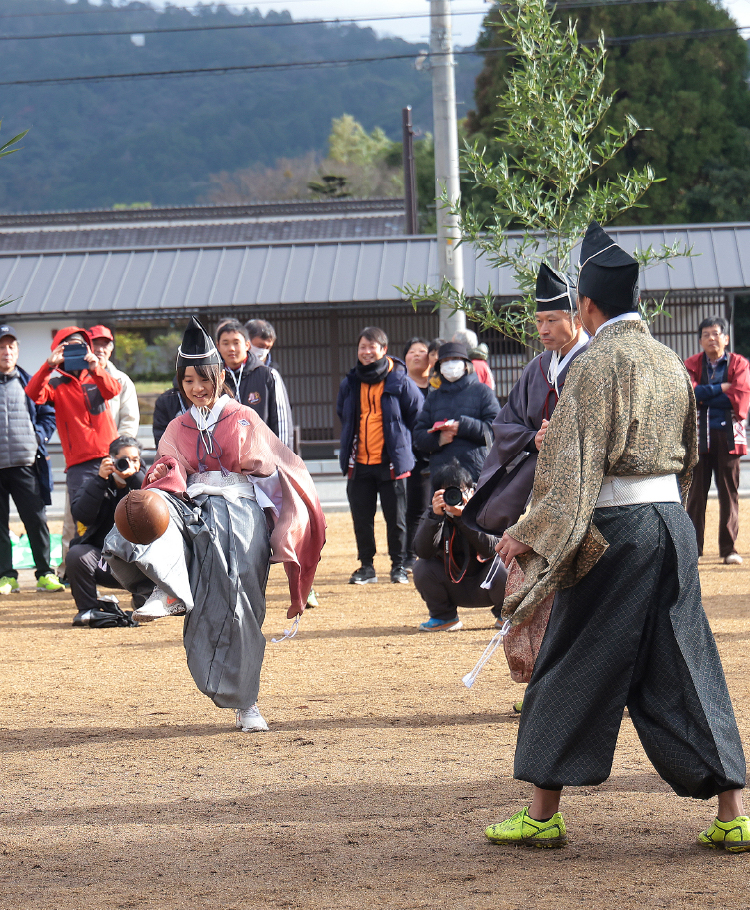
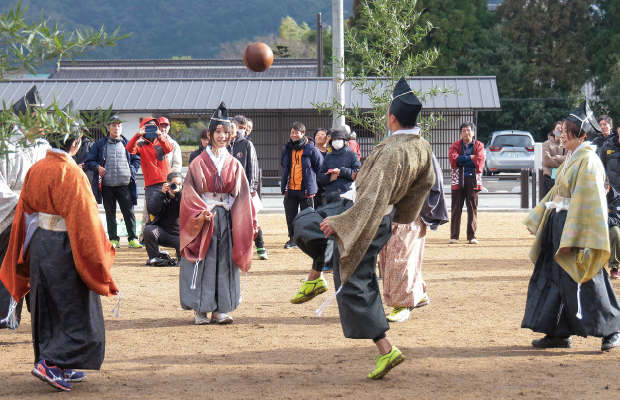
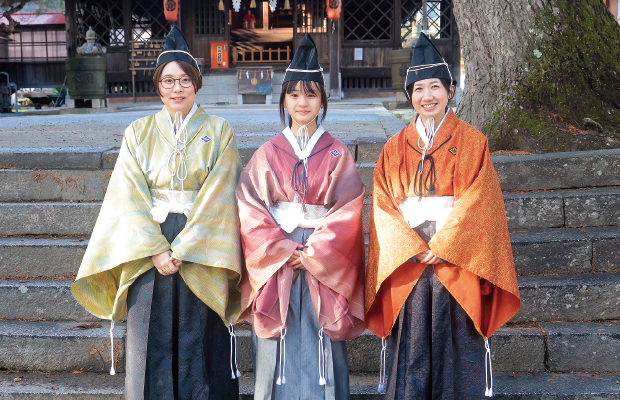
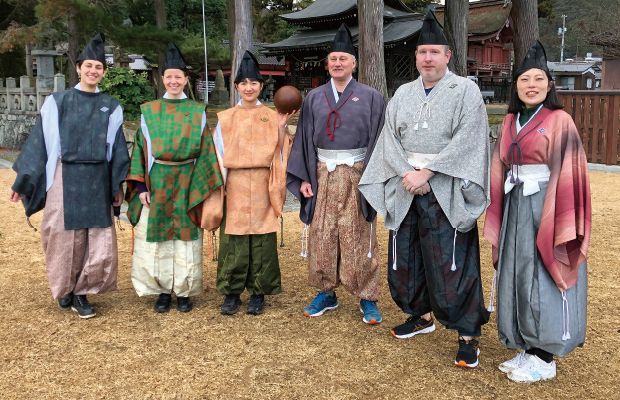
Guideline for applicants
| Starting Location | Odono Community Center, 120-4 Odono-oji, Yamaguchi City, Yamaguchi Prefecture |
|---|---|
| Ending Location | Odono Community Center, 120-4 Odono-oji, Yamaguchi City, Yamaguchi Prefecture |
| Tour Price | ¥10,000 per person for both adults and children |
|---|---|
| Number of Participants | 10 |
| Minimum Number of Participants | 2 |
| What is included | Activity and interpreter guiding |
| Application Deadline | 7 days prior to the activity |
*In case of rain, the activity will be canceled, and participants will be notified at latest 2 hours before the starting time.
*Please wear appropriate clothes and shoes.
Experience Schedule
Registration
Video viewing to learn about kemari / About 10 min.
Putting on a costume / About 10 min.
Kemari ball play / About 30 min.
Changing clothes and dismissal
Connecting Elegant Minds
Ōuchi Kemari
Experiencing the Beauty of Japanese Tradition
The elegance and spirit of kemari continue to reflect the essence of the Japanese heart and mind, undiminished through the ages.
Appreciating Traditional Japanese Culture through the Graceful Art of Kemari
Kemari is a Japanese traditional ball game with more than a millennia long history. This pastime, enjoyed in harmony by the nobility, emphasized skill, etiquette, and a balanced spirit. The graceful movements of kemari players reflect the refined elegance of ancient Japan and offer us tranquility even to this day.
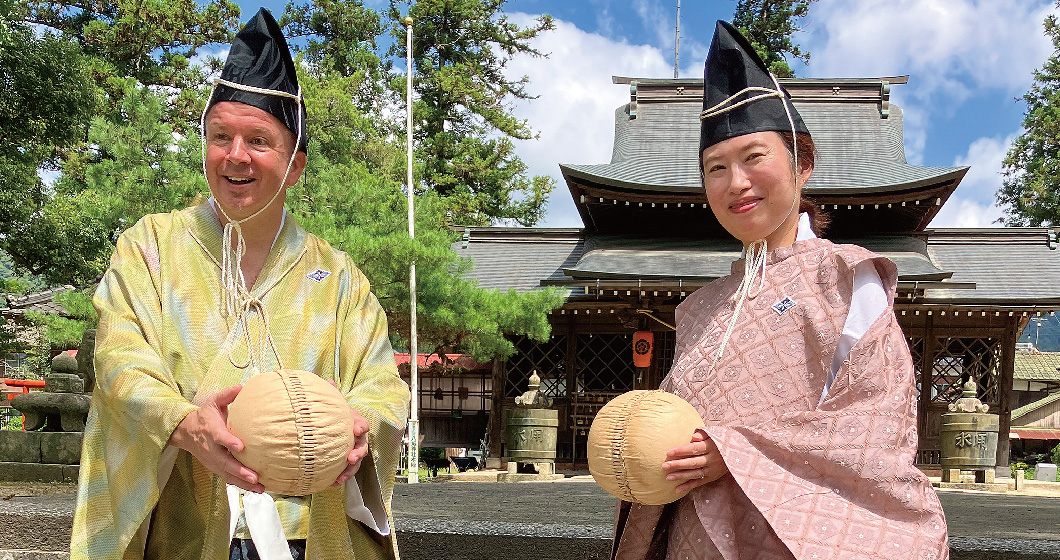
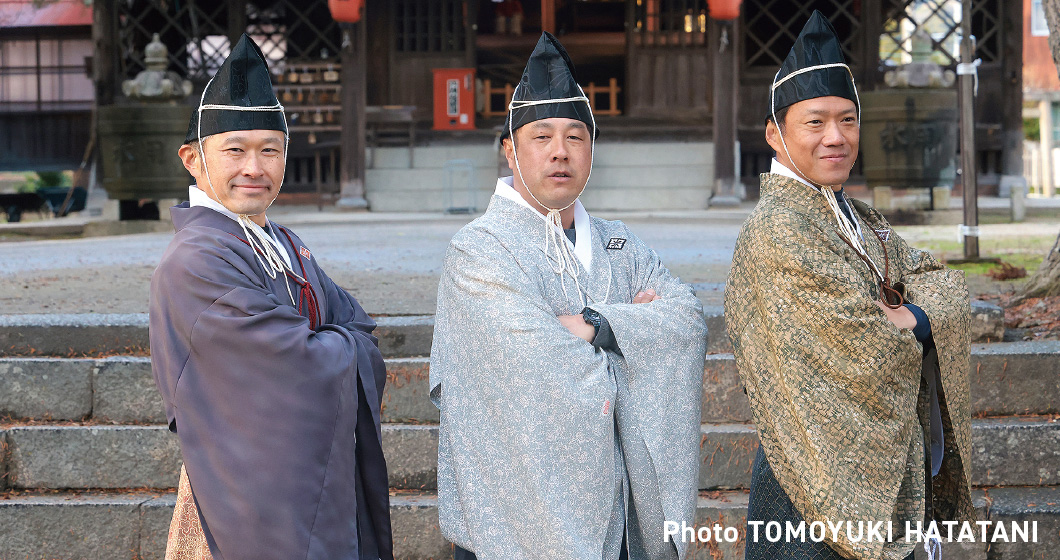
The Elegance of the Muromachi Era, Revived Across Time, Ōuchi Kemari
Originally introduced from China and refined as a noble pastime during the Heian period (794–1185), kemari became an essential skill for both the aristocratic and samurai households by the Muromachi period (1336–1573).
For the Ōuchi clan—the most powerful feudal lords of western Japan, who flourished through trade with Ming China and prioritized ties with the shogunate, imperial court, and nobility—kemari was likely practiced here in Yamaguchi as a vital art form, representing both their prestige and their devotion to cultural refinement.
History of Kemari
From the Court Noble’s Accomplishment to the Samurai’s Pursuit and then to the Commoner’s Recreation
Reference: “Blow a New Wind of Kemari” Production: Atelier-Aozora
Nara Period (710-794)
The oldest record of kemari dates back to 644 AD: An article of Nihon Shoki (The Chronicles of Japan) referred to Prince Naka-no-Ōe and politician Nakatomi-no-Kamatari playing it under the Japanese zelkova tree in Hokoji Temple in Nara. Kemari might have been something like a team competition at that time.
Heian Period (794-1185)
There also are other references to kemari in classical Japan. A legend of the 9th century mentioned an imperial prince who never failed to kick the ball. Saiyuki, a 10th-century book on court protocol and etiquette, described the sport as a pursuit of continuing to pass the ball as many times as possible. The record back then is said to have reached some hundred passes. Famous literary writings of the 11th century, such as Makura no Soshi (The Pillow Book) by Sei-Shonagon and Genji Monogatari (The Tale of Genji) by Murasaki-Shikibu also referred to kemari. As its popularity increased in the following century, kemari came to be played not necessarily as a recreational sport. There emerged families or kin groups who hereditarily performed it as a profession.
Kamakura Period (1185-1333)
Cloistered Emperor Go-Toba was very enthusiastic about kemari and made the record consecutive kicks of over two thousand. He also set up rules for wearing kemari clogs in different colors depending on the player’s age, rank, and skill level.
Muromachi Period (1336-1573)
Kemari became an essential part of court ceremonies. During the Muromachi period, the game’s ceremonial aspects were further formalized with attendance by prominent figures, including the Shogun Ashikaga Yoshimitsu, at grand kemari gatherings known as hare-no-mari-e. The importance of kemari for samurai culture was also documented in samurai etiquette guides such as Ryoshun Daizoshi, written by Imagawa Ryoshun, a Kyushu commissioner, emphasizing kemari as an essential accomplishment for samurais.
Following the Ōnin War (1467–77), the nature of these gatherings shifted dramatically. Kemari events began to be held more frequently at private residences of court aristocrats rather than at the Imperial Palace or shogun’s quarters. Kemari gradually transformed into a form of entertainment. Regional lords visiting from outside Kyoto began sponsoring these kemari gatherings, where samurai and nobles mingled, enjoying both the game and post-event banquets. This helped spread the popularity of kemari throughout Japan.
Edo Period (1603-1868)
There was a further surge in enthusiasts for this sport across regions and social classes. Kemari appeared in illustrations of such classical literature as Lady’s Maidens’ Kemari in Amorous Woman, a popular novel by Ihara Saikaku, and Chikusai, a work in the kana-zōshi genre—a genre of popular prose written primarily in kana (Japanese syllabary) during the early Edo period. Among commoners, kemari was regarded similarly to modern recreational sports, with benefits generally referred to as the ten virtues of kemari, which included health benefits, social connection, and recreational value.

